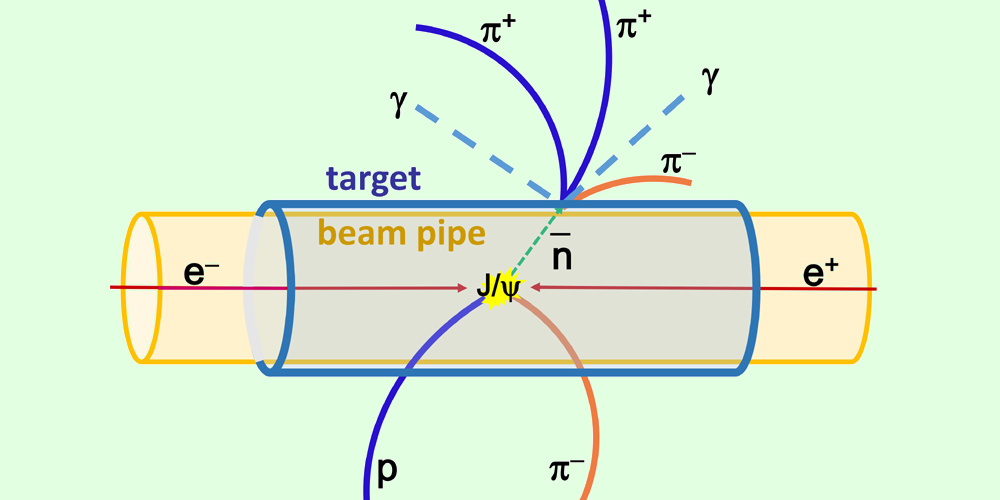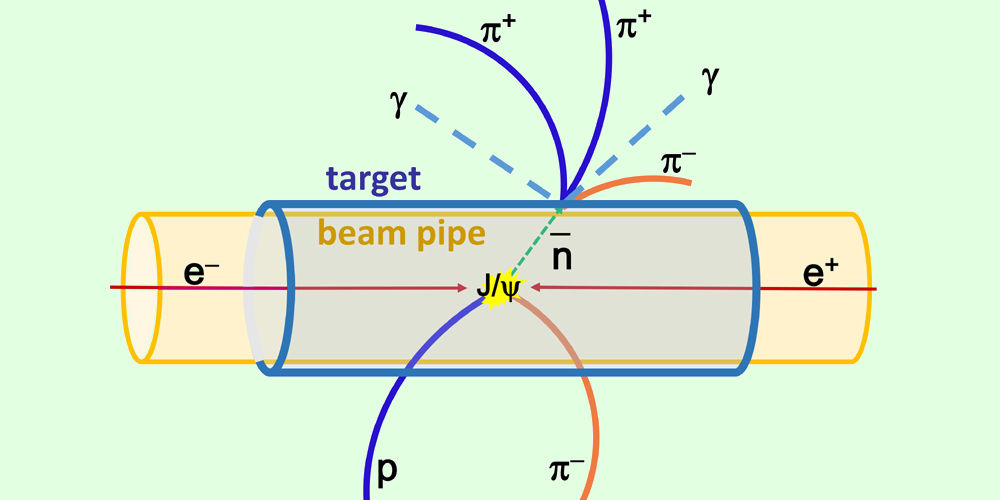Generating Antineutrons and Hyperons with Existing and Future Facilities
To study particles not typically seen in nature, physicists must generate them in accelerators. Some particles, however, have proven especially difficult to create. Now, Chang-Zheng Yuan of the Institute of High Energy Physics, China, and Marek Karliner of Tel Aviv University, Israel, propose a way to create two such kinds of particles—antineutrons and hyperons—using existing and planned accelerators [1]. The ability to produce these elusive particles without dedicated facilities could fast-track research in nuclear and particle physics, such as studies of hyperon-nucleon interactions and the role of hyperons in neutron stars.
Current methods generate these particles only in relatively small quantities. Furthermore, some production pathways—such as the proton-antiproton annihilation reactions that produce antineutrons—yield particles whose momentum and direction are difficult to measure, making them inadequate for many research purposes. In their new approach, Yuan and Karliner propose generating antineutrons and hyperons from J∕𝜓 mesons. These particles are a promising source because they often decay into antineutrons or hyperons and are themselves a relatively common product of electron-positron annihilations. Additionally, researchers could determine the momentum of particles produced in this way by measuring other particles that recoil from them in the decay reaction.
As a proof of concept, the researchers consider the Beijing Spectrometer (BESIII) experiment, a facility used to study charm quarks, tau leptons, and other particles. In four recent experimental runs, BESIII produced a total of 10 billion J∕𝜓 meson events. Yuan and Karliner estimate that if their new approach were implemented, that sample of J∕𝜓 mesons would have produced about eight million antineutrons suitable for study. Future J∕𝜓 “factories” will generate orders of magnitude more of these particles, they say.
–Erika K. Carlson
Erika K. Carlson is a Corresponding Editor for Physics based in New York City.
References
- C. Z. Yuan and M. Karliner, “Cornucopia of antineutrons and hyperons from a super J∕𝜓 factory for next-generation nuclear and particle physics high-precision experiments,” Phys. Rev. Lett. 127, 012003 (2021).





